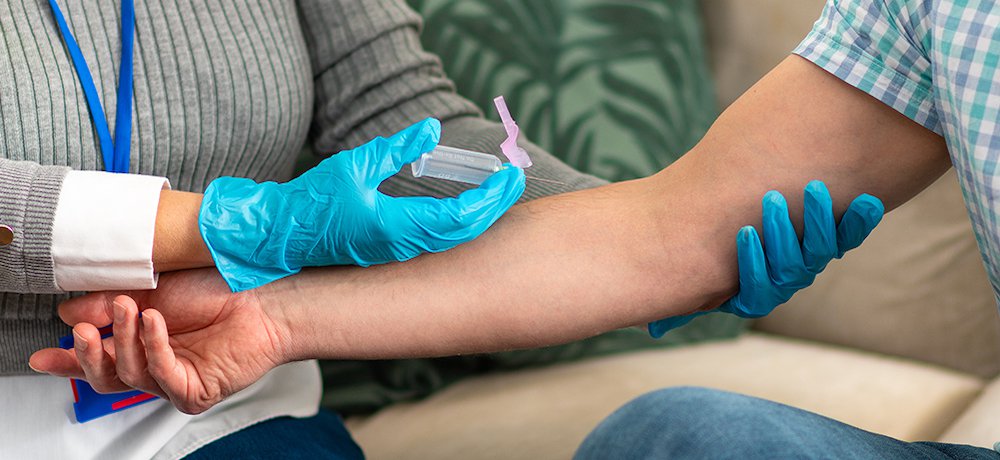Blood
What’s on the horizon for blood collection and storage?
Diagnostics is having its day, once again thrust into the spotlight following the UK government’s announcement that DIY blood testing kits will be sent to 15 million eligible adults in England, aged 40 to 74 as part of the NHS new digital MOT. Alistair Hall, head of industry partnerships at diagnostics-as-a-service platform Plasma by Medichecks, explores the technological advancements in fluid collection and storage, the evolving healthcare landscape and with it, the ever-changing pathology requirements.
As more people take responsibility for their own health and wellbeing, and the UK government announces plans to bring in a new digital health check across England next year, the role of personal diagnostics has never been more prevalent.
It is an exciting time to be involved in the diagnostics industry, with innovations on the horizon that will revolutionise the way a whole range of tests are carried out. Digital health has evolved at a significant pace and the healthcare landscape too, particularly with people, post-COVID, now more comfortable with initiating diagnostic tests themselves rather than through traditional medical channels.
What’s interesting is how technological advancements in fluid collection and storage have revolutionised the industry in the last 20 years or so. It’s now easier and more accessible for people to order and carry out tests at home – with accurate results. What’s also evident is how this growth in diagnostic testing has spurred on a new tranche of businesses that can offer even more to their customers, due to the safe capture, transportation and analysis of samples. That’s ultimately what led Medichecks to launch our business-to-business division, Plasma – to help support growth in demand.
Just over two decades ago when Medichecks was launched, it’s hard to believe that the blood samples sent for analysis at the partner labs were actually made of glass. The risk of breakages and contamination meant the company was quickly on the lookout for a more efficient method of collection and delivery.
In the intervening years the widespread use of polypropylene plastic tubes suitable for blood samples was introduced. The company adopted the material at Medichecks in 2005, which was an improvement and due to its durability, continues to be the material of choice today.
In December 2011 it launched finger-prick checks, which allowed a capillary sample to be taken without the need for a clinic visit for a venous blood draw. All of the time and money invested in finding the right tubes helped inform the strategy for remote testing. For example, collecting a finger prick blood sample may sound simple, but in reality, there are many variables. Over the years the company has found it effective to educate customers on how to effectively take a good quality finger prick blood sample, fine tuning the instructions and the items used in the kits.
In many ways the current methods of fluid storage and collection have been fairly consistent over the last 15 or so years. But there have been advancements in needle technology. For example, Becton Dickinson (BD) produces the Vacutainer Flashback Blood Collection Needles for taking venous samples. These provide instant confirmation of needle placement with a visual flashback system. And in terms of capillary samples the Tasso and TAP II was introduced about six years ago, which is a device that can be used at home to collect blood at the touch of a button. It’s a device that attaches to the upper arm containing mini needles that break the skin, with a vacuum extracting the blood into a tube.
Both methods work well and can be tailored based on the need of the customer, which is particularly useful for people who struggle with the sight of blood. But they do have limitations for mass-market use in terms of the cost – both to manufacture the device itself and postage prices, being both larger and heavier than the finger-prick test. Being in the business of remote testing, weight and size of test kits is important. All of the kits are under 25mm deep, exceeding this can triple postage costs which is just not viable for our customers.
Medichecks use BD products for all blood sample collection equipment, from the tubes through to needles and lancets.
The company have considered other diagnostic methods that are being used more readily today, such as Dried Blood Spot (DBS), which allows a test to be carried out on a few drops of blood on a test paper or card. This is successfully used for HIV screening, but doesn’t give us enough blood to sample, particularly when you consider the percentage of each sample we can effectively test and the number of biomarkers that need to be tested.
The company aims to help shape what the future looks like and what customers – both consumers and from the healthcare sector – want to see from collection and storage devices.
Possibilities include a non-invasive at-home devices that could scan your finger and gain information on your blood without any need for breaking the skin or producing a sample.
Innovations in blood collection too, which make finger-prick collections easier to do and take more blood, would really open the door to more extensive opportunities with capillary samples. Currently a full blood count test that will examine red and white blood cells and identify immune system abnormalities or a virus or bacterial infection, are not generally possible on capillary samples because failure rates can be high and a large volume of blood is required. That’s why Medichecks recommend venous samples for our more comprehensive checks that test more biomarkers.
The most customer-driven development that I foresee is speed. Consumers demand quick responses in most situations, and the diagnostics industry is no different. Same day sampling, collection, analysis, and results – that’s what people are calling out for. So alongside our partners and customers, the company is exploring how to can make this a reality much sooner.

